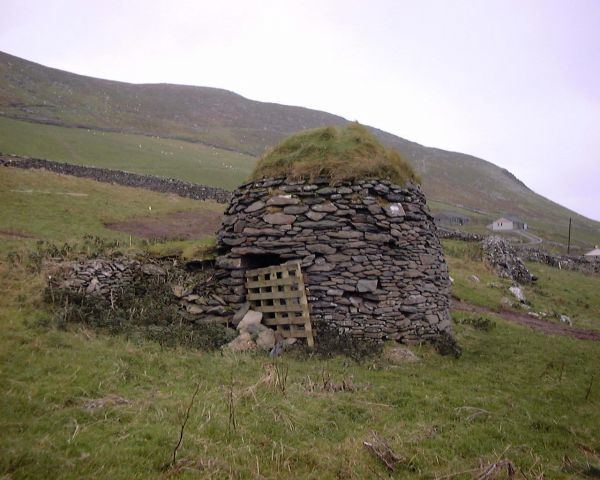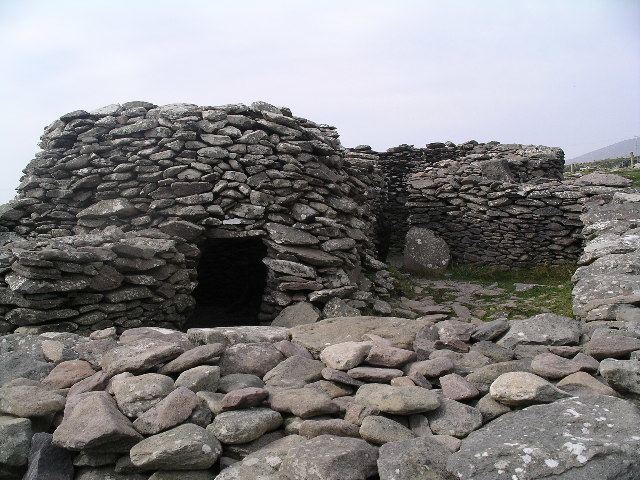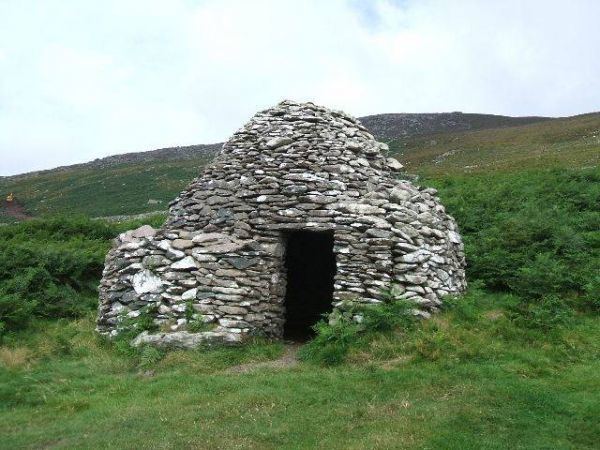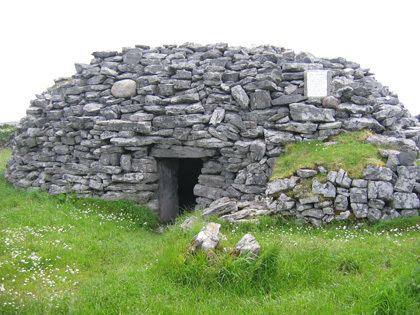 | ||
Similar Dingle Peninsula, Gallarus Oratory, Kilmalkedar Church, Eask Tower, Great Blasket Island | ||
Looking at the ancient beehive huts cloch n in the dingle peninsula county kerry ireland
A Clochán is a dry-stone hut with a corbelled roof, commonly associated with the south-western Irish seaboard. The precise construction date of most of these structures is unknown with any degree of certainty.
Contents
- Looking at the ancient beehive huts cloch n in the dingle peninsula county kerry ireland
- An cloch n liath
- Dates
- Form
- Locations
- References

An cloch n liath
Dates

According to archeologist Lloyd Laing, there appears to be no direct evidence to date any of these buildings before the 8th century. While some associated with religious sites may be pre-Romanesque, he considers most to date after the 12th century, including up to the 19th century.
Form

They are most commonly round beehive huts, but rectangular plans are known as well. It has been suggested that the rectangular footprints date to a later era. Some Clochans are not completely built of stone, and may have possessed a thatched roof. The walls are very thick, up to 1.5 metres (4 ft 11 in). Sometimes several clochans are joined together by their walls.
Their design's cross-section is a Catenary arch, [1].
Locations

Clochans are mainly found in the Southwest of Ireland, for example at Skellig Michael, Church Island off Beginish Island and Fahan and Reask in the Dingle Peninsula of County Kerry. Many occur in religious contexts such as used by the monks following Saint Patrick; moreover, his successors carried on the architectural tradition in the Scottish Isle of Iona and eventually via Aidan to the eastern English Islands of Farne and Holy Island. There are others in ringforts (such as Leacanbuaile, County Kerry) that are commonly interpreted as secular dwellings. Elaborate dry walled stone churches like the Gallarus Oratory may derive from Clochans. The clochan has been described in the 7th to 8th century law Críth Gablach.

